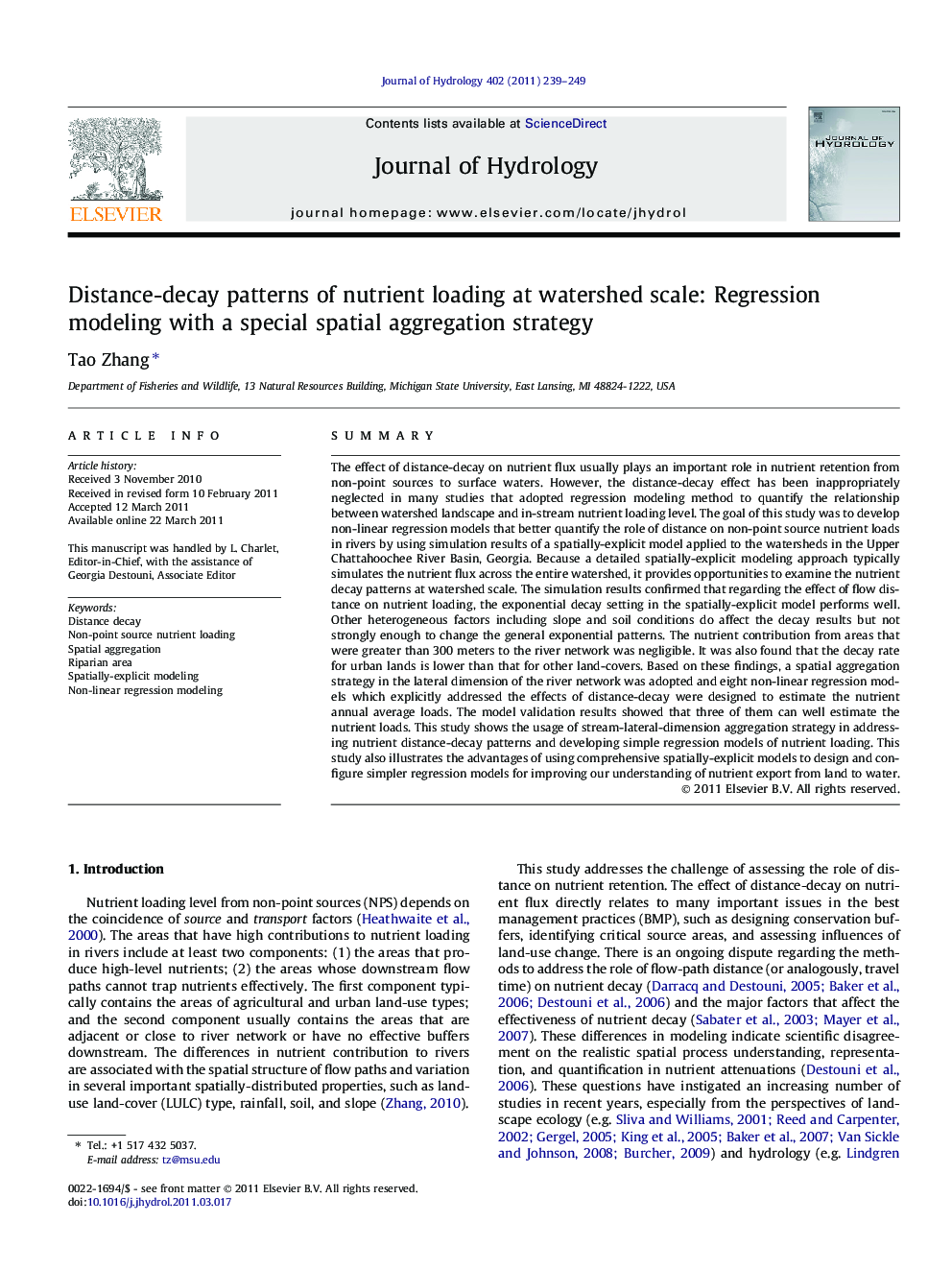| کد مقاله | کد نشریه | سال انتشار | مقاله انگلیسی | نسخه تمام متن |
|---|---|---|---|---|
| 4577525 | 1630023 | 2011 | 11 صفحه PDF | دانلود رایگان |

SummaryThe effect of distance-decay on nutrient flux usually plays an important role in nutrient retention from non-point sources to surface waters. However, the distance-decay effect has been inappropriately neglected in many studies that adopted regression modeling method to quantify the relationship between watershed landscape and in-stream nutrient loading level. The goal of this study was to develop non-linear regression models that better quantify the role of distance on non-point source nutrient loads in rivers by using simulation results of a spatially-explicit model applied to the watersheds in the Upper Chattahoochee River Basin, Georgia. Because a detailed spatially-explicit modeling approach typically simulates the nutrient flux across the entire watershed, it provides opportunities to examine the nutrient decay patterns at watershed scale. The simulation results confirmed that regarding the effect of flow distance on nutrient loading, the exponential decay setting in the spatially-explicit model performs well. Other heterogeneous factors including slope and soil conditions do affect the decay results but not strongly enough to change the general exponential patterns. The nutrient contribution from areas that were greater than 300 meters to the river network was negligible. It was also found that the decay rate for urban lands is lower than that for other land-covers. Based on these findings, a spatial aggregation strategy in the lateral dimension of the river network was adopted and eight non-linear regression models which explicitly addressed the effects of distance-decay were designed to estimate the nutrient annual average loads. The model validation results showed that three of them can well estimate the nutrient loads. This study shows the usage of stream-lateral-dimension aggregation strategy in addressing nutrient distance-decay patterns and developing simple regression models of nutrient loading. This study also illustrates the advantages of using comprehensive spatially-explicit models to design and configure simpler regression models for improving our understanding of nutrient export from land to water.
► River nutrient loads are largely governed by the landscape of riparian areas.
► Distance decay in urbanized regions is different from agricultural ones in patterns.
► Spatial aggregation in lateral direction helps develop non-linear regression models.
► These regression models can well predict nutrient loads at watershed scale.
Journal: Journal of Hydrology - Volume 402, Issues 3–4, 25 May 2011, Pages 239–249